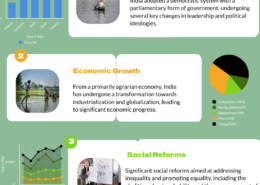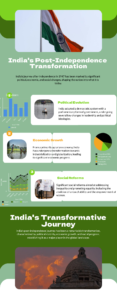ANSWERS PLZZZ!!
Primary education in rural India faces several challenges that need addressing: Infrastructure Issues: Schools often lack basic facilities like classrooms, toilets, and clean water. Solution Invest in building and improving school facilities, and encourage community involvement in maintenance. TeachRead more
Primary education in rural India faces several challenges that need addressing:
Infrastructure Issues: Schools often lack basic facilities like classrooms, toilets, and clean water.
Solution Invest in building and improving school facilities, and encourage community involvement in maintenance.
Teacher Quality and Quantity: Many rural areas face shortages of qualified teachers, and existing teachers may lack proper training.
Solution: Recruit more teachers, enhance their training, and offer incentives to retain them in rural regions.
Student Attendance: Distance from schools can prevent regular attendance, especially for girls.
Solution: Improve transportation options and consider setting up mobile schools or local learning centers.
Economic Barriers: Economic pressures lead to low enrollment and high dropout rates.
Solution: Provide scholarships and financial support to families, and run programs to promote the importance of education.
Resource Scarcity: Schools often have limited educational materials and resources.
Solution: Distribute books and learning materials through government schemes and partnerships with NGOs.
Health and Nutrition: Poor health and malnutrition impact students’ ability to learn.
Solution: Implement school meal programs and regular health check-ups to support student well-being.
By focusing on these points and implementing targeted solutions, primary education in rural India can be significantly improved.
See less


India is still considered a developing country primarily due to several key factors that hinder its progress towards becoming a developed nation. Firstly, despite rapid economic growth and advancements in various sectors, India faces persistent challenges such as poverty, income inequality, and lackRead more
India is still considered a developing country primarily due to several key factors that hinder its progress towards becoming a developed nation.
Firstly, despite rapid economic growth and advancements in various sectors, India faces persistent challenges such as poverty, income inequality, and lack of widespread access to basic services like healthcare and education. These disparities are significant and continue to widen the gap between the affluent and the marginalized populations.
Secondly, infrastructure development remains inadequate in many parts of the country. While urban centers showcase modern infrastructure, rural areas often lack basic amenities like roads, electricity, and sanitation facilities, which are crucial for sustainable development.
Thirdly, India’s demographic dividend, characterized by a large and youthful population, presents both opportunities and challenges. While the youth population can drive economic growth and innovation, issues such as unemployment and underemployment remain prevalent, indicating a mismatch between skill development and job market needs.
Moreover, governance issues, bureaucratic inefficiencies, and corruption have historically impeded effective policy implementation and economic progress. These factors, combined with environmental challenges and regional disparities, contribute to India’s classification as a developing nation despite its economic potential and global influence.
In essence, while India has made significant strides in various domains, addressing these multifaceted challenges comprehensively is essential to transitioning from a developing to a developed country status.
See less